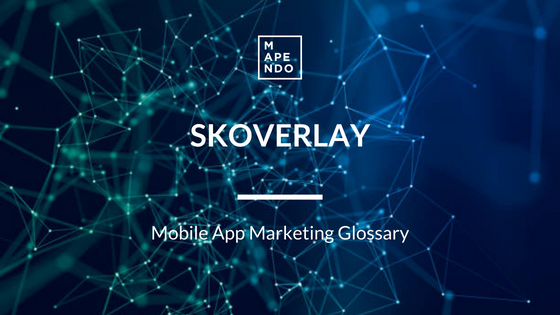In the context of apps, mobile user acquisition refers to the process of generating new installs and new users through various marketing activities. Mobile User Acquisition (UA) is usually done by marketers through a combination of organic activities, branding activities and paid marketing. The target of mobile user acquisition is to generate new installs for mobile apps at a cost that is less than the Lifetime Value (LTV) generated by the same users.
User Acquisition Strategy
Mobile User Acquisition involves marketing activities that span through many channels, some of them are paid marketing while others rely on organic channels. For example, paid activities are display advertising (or social media advertisement); organic activities include using owned media (for example the site of the app publisher, or articles published on online media) or the app store itself. This is the case of App Store Optimization (ASO), a process that optimizes the app listing on the store (App Store for iOs and Google Play or alternative stores for Android apps).
The App marketer uses a mobile user acquisition strategy that involves a number of different channels, trying to maximize the number of new users and new installs, while reducing the overall acquisition cost.
How is acquisition cost calculated? The Cost per Install is defined as follows
Average Cost per install (CPI) = Total cost of media or ads / Number of installs generated through any channel in a given period of time
The best User Acquisition Strategy is usually still based on Cost per Install (CPI), but the savvy app marketer might use other metrics, such as CPA campaigns for apps. We’ll discuss this later.
Common Challenges For User Acquisition
As User Acquisition for mobile apps involves many different activities, there are some challenges that the app marketer will face during the process. Usually the biggest ones are Measurement and Ad Fraud, let’s analyze them.
Since mobile apps have no pixel, measurement is done through software platforms, known as Mobile Measurement Partners (MMPs) that must be integrated into the source code of the app itself via their SDKs. MMPs are also integrated with the app store and track clicks that lead to the app install (and the first opening of the app itself). While setting up measurement for mobile app campaigns the app marketer must be very careful about the right settings. For example, MMP can measure conversions according to a chosen attribution model: deterministic attribution is very precise, but tends to underestimate the number of installs generated by mobile app campaigns. On the other hand, probabilistic measurement is less precise in identifying the source of every app install, but gives a better idea of the results the different channels are bringing in. This is due, as the name suggests, by the fact that probabilistic attribution uses probabilistic analysis to estimate the efficiency of every channel. Please consult your MMP provider in order to deeply understand the pros and cons of every measurement setup.
Another common challenge that must be faced while defining a Mobile User Acquisition Strategy is fraud. Fraudsters try to cheat the Measurement platforms, attributing more installs and post-install events to their channels, thus increasing the ROAS in a deceptive way. Fraud is a plague that has affected every online mobile advertising activity for years. Much has been done to prevent fraud, but fraudsters are quick to adapt and invent new strategies. It’s a chase and run, but Mobile Measurement Platforms offer good countermeasures to limit or prevent mobile ad fraud.
Mobile User Acquisition Prices and Budgets
One of the most interesting questions is always about the pricing models and budgets for mobile user acquisition. How much spending is necessary to scale up your mobile user acquisition efforts and drive lots of new users to your app? As we have defined above the cost per install is defined as the total spending of mobile app campaigns divided by the total number of installs generated by the campaign.
Once you get to a good Cost per Install (lower than the Lifetime value generated by new users) you can scale up your user acquisition efforts and define an efficient overall budget (and also a weekly/monthly budget for every channel you are using to bring in new users).
The various Mobile Measurement Platforms offer very efficient tracking solutions and dashboards to track ROI/ROAS for mobile app install campaigns.
As for pricing models, Cost per Install (CPI) is at the very base of every mobile user acquisition activity. CPI is not tied to the revenues generated by users, thus the revenues obtained from the app itself, but it is a very efficient metric to measure ad spending.
In some cases the app marketer might be interested in measuring app campaign performance in terms of KPIs tied to the revenues that will be generated by users. The number of installs is not a good indicator of revenues, so mobile user acquisition efforts might rely on CPA campaigns. CPA stands for Cost per Action, and it is the equivalent to the ad spending needed to generate a given action. The action is done by the user after the install, it might be a registration or a purchase.
Cost per Action = Total spending of app campaigns / Number of given actions generated
Obviously for every campaign Cost per Action (CPA) is higher or equal to the Cost per Install.
Wanna know which model to use? Try reading this articles about CPI or CPA user acquisition campaigns for mobile apps.
About us
Mapendo is a tech platform for app user acquisition. We are a fully managed DSP, which runs machine learning powered CPI/CPA app campaigns. We help mobile apps acquire high-quality users at scale with programmatic traffic. Our ads reach 300 million people in the US every day and generated 1 million conversions for our clients in the last quarter.





















